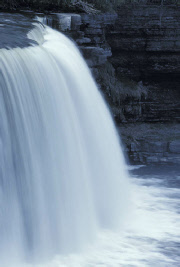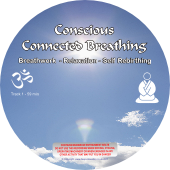


DOWN TO EARTH REALISTIC PRICES! - - - - 100% MONEY BACK GUARANTEE!







Conscious Connected Breathing
Instructions for Use & Free Test Drive
Firstly I need to tell you about the anchor bells and the rhythm. The bells are prominent throughout the recording and you will hear the first one within 30 seconds. The reason for these is simply to remind you to:
- breathe fully and high into your chest
- relax completely on the exhale – just drop it like a stone
- keep the breathing connected – no pausing between exhale / inhale
- breathe either through the mouth or nose, but don’t alternate
Ok so read the above three times and remember that the bells are to remind you of these instructions and every time you hear one you will remember.
Now the rhythm – during the course of a session, your breathing pattern will change according to how you feel from:
- full and slow
- full and fast
- fast and shallow
But in all cases the exhale should never be forced – just let it find its own way out. And remember that the breathing should be connected with no pauses between the inhale and exhale or the exhale and inhale.
So attempting to create an exact rhythm to follow is impossible as everyone is going to breathe differently. With this in mind, the rhythm on the recording consists of a breath sound followed by an OM sound which can be followed as required or easily ignored and just heard as a comfortable background sound. We’ll call these two sounds, ‘sound A’ and ‘sound B’ but it makes no difference which is which.
As an experiment, click on the icon to the left and this will give you a five minute sample in order to try the following:
- Inhale fully to the count of about 10/12 with sound A;
- Exhale with sound B (with no count), just let it go;
- As soon as the exhale is complete, inhale again with sound A, but don’t wait for sound A to start;
- Exhale again with sound B etc.
The above will create a fairly slow breath rhythm. Try this for a few breaths and see how you get one -
Now as an alternative you can double the speed as follows:
- Inhale to the count of about 4 with either sound then exhale with the same sound;
- Repeat and continue, with the next sound.
I know you might be thinking that as we’ve doubled the speed the count should be to 5 or 6 and not 4. Well it’s a mystery 5/6 doesn’t work for me but you can try it if you want.
Either of these can be used as a good starting point, but any time that you feel like breathing faster or slower -
What also works well with the rhythm is ‘20 connected breaths’:
- Breathe as in the second example above to the count of about 4.
- Do this four times then on the fifth inhale breathe as deeply as you can, then exhale.
- Repeat four times (20 breaths) or more. Obviously the long breath will go off the rhythm, but you’ll find that you can easily pick it up – experiment!
What works well for me is to go through a period of full and slow breathing, then to move on to full and fast, then occasionally fast and shallow, and then repeat.
But as long as the breath is connected and the exhale is relaxed, you cannot go wrong – I urge you to try it!
So to recap:
- Choose a time and place where you will not be disturbed, preferably at least two hours after eating, turn off all telephones; get into a comfortable position either sitting or lying down preferably without a pillow (use one if you have to); adjust room temperature and lighting to a comfortable level;
- Turn on the recording (with or without headphones);
- Ask for guidance from whoever/whatever you believe in. If you don’t believe in anything, then ask this of your inner Self;
- Choose to breathe either through your mouth or nose, but don’t alternate between the two (I find mouth breathing best, but this is just my choice). If breathing through the nose; imagine that you are drawing energy up through your nose to the third eye. If breathing through the mouth; imagine that you are drawing energy up from your feet high into your chest;
- Begin breathing and follow one of the rhythms as described above. As soon as the exhale is complete, begin the inhale, don’t wait to keep in time with the rhythm. In all cases, be sure that you breathe fully and mainly from the abdomen high into the chest. If you want to make any adjustments to keep with the rhythm, do so by extending the inhale – DO NOT CONTROL THE EXHALE;
- As you breathe, scan through your body to check that it is completely relaxed. I find that I get a lot of tension in my facial muscles and also in my bum as I’m drawing the breath in;
- Focus your attention on whichever part of your body feels like it needs your attention and if you feel any discomfort, breathe into that area and it will disperse. As you continue breathing, you may notice that suppressed emotions / traumas could resurface as energy patterns in your body. You don’t need to analyse these or know where they’ve come from, just breathe into them and they’ll disperse / integrate on their own;
- Towards the end of the session, at worst, you’ll feel wonderfully comfortable and relaxed; at best you’ll sink into absolute bliss. And the more you do it, the more amazing you will feel!
- If you wish to continue beyond the 60 minutes of the recording you can do so either in silence or my Tibetan Bells or Remembering Who You Are are perfect continuums, the later of which also continues with the same rhythm.
When returning to normal waking consciousness, give yourself plenty of time to come round before doing anything potentially dangerous like driving or climbing a ladder etc.
Important: Please do not copy the sample and play it in repetition as an alternative to obtaining the full recording as the brainwave entrainment will be all over the place. The full download is available at a reasonable price, if this is too expensive, just tell me and I’ll give it to you for free!
Alternate Nostril Breathing
The recording can also be used for alternate nostril breathing which is absolutely nothing to do with the ‘rebirthing breath’, but nevertheless a useful and beneficial practice.
To do this:
- Block your right nostril with your thumb and breathe in through your left nostril with the sound A;
- Without pausing, block your left nostril with your second or third finger and breathe out of your right nostril to sound B;
- Keeping your left nostril blocked, breathe in through your right nostril to sound A;
- Block your right nostril and breathe out of your left nostril to sound B.
The above is one cycle. Doing this regularly will help to balance the two hemispheres of your brain and also clears your nadis. You can of course do this for as long or as short as you feel like. 10 – 20 minutes is good.











| Problems |
| Instructions forUse |
| Alpha Video |
| Mix & Match Form |
| Tibetan Bells Video |
| Reiki Video |
| Prosperity CD mp3 |
| Sleep Like A Brick CD mp3 |
| Creativity CD mp3 |
| Anxiety CD mp3 |
| Addiction CD mp3 |
| Weight Control CD mp3 |
| Golden Sphere |
| Binaural Beat Maker Plus |
| Learn to Drive |
| Caravanning For Beginners |
| Clutch Control |
| Learn to Play Piano / Keyboard |
| Thoughts for the Day |
| Isochronic Tones vs Binaural Beats |
| Binaural Beats Free Download |
| Isochronic Tones Free Download |
| Ganzfeld Goggles |
| Self Rebirthing |
| Joanna Cherry |
| My Policy |







